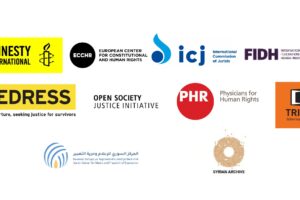Procedural Posture
Following the decision of the Revenue Commissioners to refuse them tax allowances as a married couple, the plaintiffs sought leave to apply for judicial review and the High Court of Ireland granted the application.
Facts
The plaintiffs were an Irish lesbian couple who had lived together for 23 years. In 2003 they were married in British Columbia, Canada, because British Columbia procedures did not require citizenship or residency prior to marriage. After their marriage, the plaintiffs wrote to the first defendant, the Revenue Commissioners, requesting permission to claim their allowances as a married couple under the Taxes Consolidation Act. The Revenue Commissioners responded that they could not allow them the married couples’ allowance because the text of the Taxes Consolidation Act explicitly referred to a married couple as husband and wife.
Issue
Whether the defendants’ interpretation of tax law to exclude same-sex couples violated the plaintiffs’ constitutional rights to equal protection, privacy, property and protection of the family.
Domestic Law
Civil Registration Act 2004, Section 2(2)(e) (providing that there is an impediment to marriage if both parties are of the same sex).
Constitution of Ireland, Articles 40 (equality before the law), 41 (protecting the family and the institution of marriage), and 43 (private property).
Taxes Consolidation Act 1997, Sections 1017 and 1019 (providing for a husband to be assessed on his and his wife’s total income and vice versa).
Foy v. An t-Ard Chláraitheoir and Others, High Court of Ireland, 2002 (concerning the legal status of a post-operative transgender person and holding that marriage as understood by the Irish Constitution referred to the union of a biological man with a biological woman).
Murray v. Ireland, High Court of Ireland, 1985 (affirming that the impossibility to procreate did not exclude couples from the constitutional concepts of marriage and family and defining marriage as “a partnership based on an irrevocable personal consent given by both spouses which establishes a unique and very special life-long relationship”).
International Law
European Convention on Human Rights, Article 8 (right to privacy), Article 12 (right to marry), and Article 14 (non-discrimination).
Goodwin v. United Kingdom, ECtHR, 2002 (holding that refusal to recognise post-operative transgender woman in her reassigned sex and the consequent lack of capacity to marry her male partner violated Articles 8 and 12 of the European Convention).
Johnston v. Ireland, ECtHR, 1986 (holding that Article 8 of the European Convention did not “impose a positive obligation to establish for unmarried couples a status analogous to that of married couples”).
Karner v. Austria, ECtHR, 2003 (holding that different treatment based on sexual orientation required “particularly serious reasons” by way of justification).
Rees v. United Kingdom, ECtHR, 1986, Cossey v. United Kingdom, ECtHR, 1990 and Sheffield and Horsham v. United Kingdom, ECtHR, 1998 (holding that the right to marry under Article 12 of the European Convention referred to the traditional marriage between persons of opposite biological sexes).
Comparative Law
Baehr v. Lewin, Supreme Court of Hawaii, United States, 1993 (holding that the prohibition of same-sex marriage constituted gender-based discrimination).
Baker v. State, Vermont Supreme Court, United States, 1999 (holding that excluding same-sex couples from benefits and protections incident to marriage under State law violated the common benefits clause of the State Constitution).
Dean v. District of Columbia, United States Court of Appeals for the District of Columbia, 1995 (holding that a statute prohibiting the clerk of the Superior Court from issuing marriage licences to same-sex couples did not violate the equal protection clause of the Constitution).
Ghaidan v. Godin-Mendoza, House of Lords, United Kingdom, 2004 (holding that “where the alleged violation comprises differential treatment based on grounds such as race or sex or sexual orientation the court will scrutinise with intensity any reasons said to constitute justification”).
Goodridge v. Department of Public Health, Supreme Judicial Court of Massachusetts, United States, 2003 (holding that the ban on same-sex marriage failed the constitutional guarantees of equal protection and liberty).
Halpern and Others v. Attorney General of Canada, Ontario Court of Appeal, Canada, 2003 (holding that the definition of marriage under the Canadian Charter could not be frozen in its original meaning and must be interpreted to include same-sex couples).
Hyde v. Hyde and Woodmansee, Courts of Probate and Divorce, United Kingdom, 1866 (defining common law marriage as the voluntary union for life of one man and one woman, to the exclusion of all others).
Lawrence v. Texas, United States Supreme Court, 2003 (affirming that same-sex sexual conduct between consenting adults was part of the liberty protected by the substantive due process clause of the 14th Amendment to the federal Constitution and striking down the sodomy law of Texas).
Loving v. Virginia, United States Supreme Court, 1967 (declaring Virginia’s ban on interracial marriage unconstitutional and ending all race-based legal restrictions on marriage).
Reference re Same Sex Marriage, Supreme Court of Canada, 2004 (holding that the definition of marriage was not constitutionally fixed).
Wilkinson and Kitzinger v. Her Majesty’s Attorney General, High Court of Justice of England and Wales, United Kingdom, 2006 (holding that the ban on same-sex marriage constituted a distinction based on sexual orientation but, given that same-sex civil partnerships were recognised under English law, the distinction was within the margin of appreciation accorded to States under the European Convention).
Reasoning of the Court
The plaintiffs challenged the State’s refusal to recognise their marriage performed in Canada. They argued that they were financially disadvantaged under Irish tax law because they did not receive the allowance for married couples. They also argued that, because the terms “married person”, “spouse”, “husband” and “wife” were not defined in the Taxes Consolidation Act or in the Constitution, the defendants had wrongfully interpreted tax law to exclude same-sex couples from the application of its provisions.
According to the plaintiffs, the same refusal subjected them to unjust discrimination, in breach of their constitutional rights under Articles 40, 41, and 43 of the Constitution. They therefore sought to have relevant provisions of the tax code declared invalid, whenever they limited tax benefits to heterosexual marriages. Alternatively, the plaintiffs argued, the same refusal amounted to discrimination based on sexual orientation, contrary to Articles 8, 12 and 14 of the European Convention.
The plaintiffs’ main argument was that the relevant provisions of the tax law and the Constitution must be interpreted in the light of changes in the common understanding of the institution of marriage, and in particular the changing consensus on same-sex marriage.
The defendants responded that Article 41 of the Constitution, adopted in 1937, obviously considered marriage to be the union of a man and a woman, and it was impossible to reinterpret the Constitution to protect the right of same-sex couples to marry. Doing so would amount to rewriting rather than re-interpreting the provision. The same could be said of the European Court’s jurisprudence. Far from recognising the right of same-sex couples to marry, its decisions concerning a post-operative transgender person’s right to marry confirmed the heterosexual character of the institution of marriage.
Both parties relied extensively on comparative as well as international jurisprudence on the legal status of same-sex partnerships and same-sex marriage, and the definition of marriage itself.
The Court comprehensively reviewed the current position of medical and psychiatric theory, with regard both to homosexuality and the possible impact of same-sex parenting on children. The Court found that evidence on the positive or neutral impact of same-sex parenting on children was not consensual and stated that it would reserve judgment on this question. Studies of same-sex parenting were recent and were not comprehensive. Even if no evidence were found to demonstrate that same-sex parenting had an adverse impact on children, further studies were needed before a firm conclusion on the issue could be drawn.
The Court recognised that same-sex marriage had been extensively litigated around the world and that there was no consensus on what legal status, if any, should be granted to same-sex couples. It noted great diversity among countries within the European Union with regard to same-sex marriage and partnerships. However, the Court recognised that the two plaintiffs had testified to “the sense of social exclusion they feel by virtue of being denied entry to the institution of marriage”. The Court commented on the strength and stability of their relationship and observed that the Constitution was a living instrument. It referred to the decision of the Massachusetts Supreme Judicial Court in Goodridge, but added that a number of other courts had come to a different conclusion. Furthermore, the Constitution’s definition of marriage as a union between a man and a woman had repeatedly been reaffirmed by Irish courts. It was therefore impossible to accept the plaintiffs’ argument that the definition of marriage as understood in 1937 must be reconsidered in the light of the contemporary understanding of marriage. The Court found no consensus on the question of same-sex marriage, either at domestic or international level.
Finally, the Court observed that, when it enacted the Civil Registration Act in 2004, Ireland had explicitly excluded same-sex couples from the institution of marriage. The Court considered this to be a clear indication of the prevailing attitude to marriage within Ireland.
If the exclusion of same-sex couples from marriage created a discriminatory distinction based on sexual orientation, the disparate treatment was justified under Article 41 of the Constitution, which pledged the State “to guard with special care the institution of Marriage”. A second justification could be found, moreover, in the lack of evidence about the impact of same-sex parenting on children.
Noting the hardship that people might suffer if they were denied the right to marry, the Court urged legislative action “to ameliorate these difficulties”. It was nevertheless for the legislature “to determine the extent to which such changes should be made”.
The Court dismissed the plaintiffs’ claim for recognition of their Canadian marriage as well as their challenge to the relevant provisions of the tax law.
Postscript
The plaintiffs appealed the High Court judgment to the Supreme Court. A decision is pending.
Zappone and Gilligan v. Revenue Commissioners and Others, High Court of Ireland (full text of judgment, PDF)




